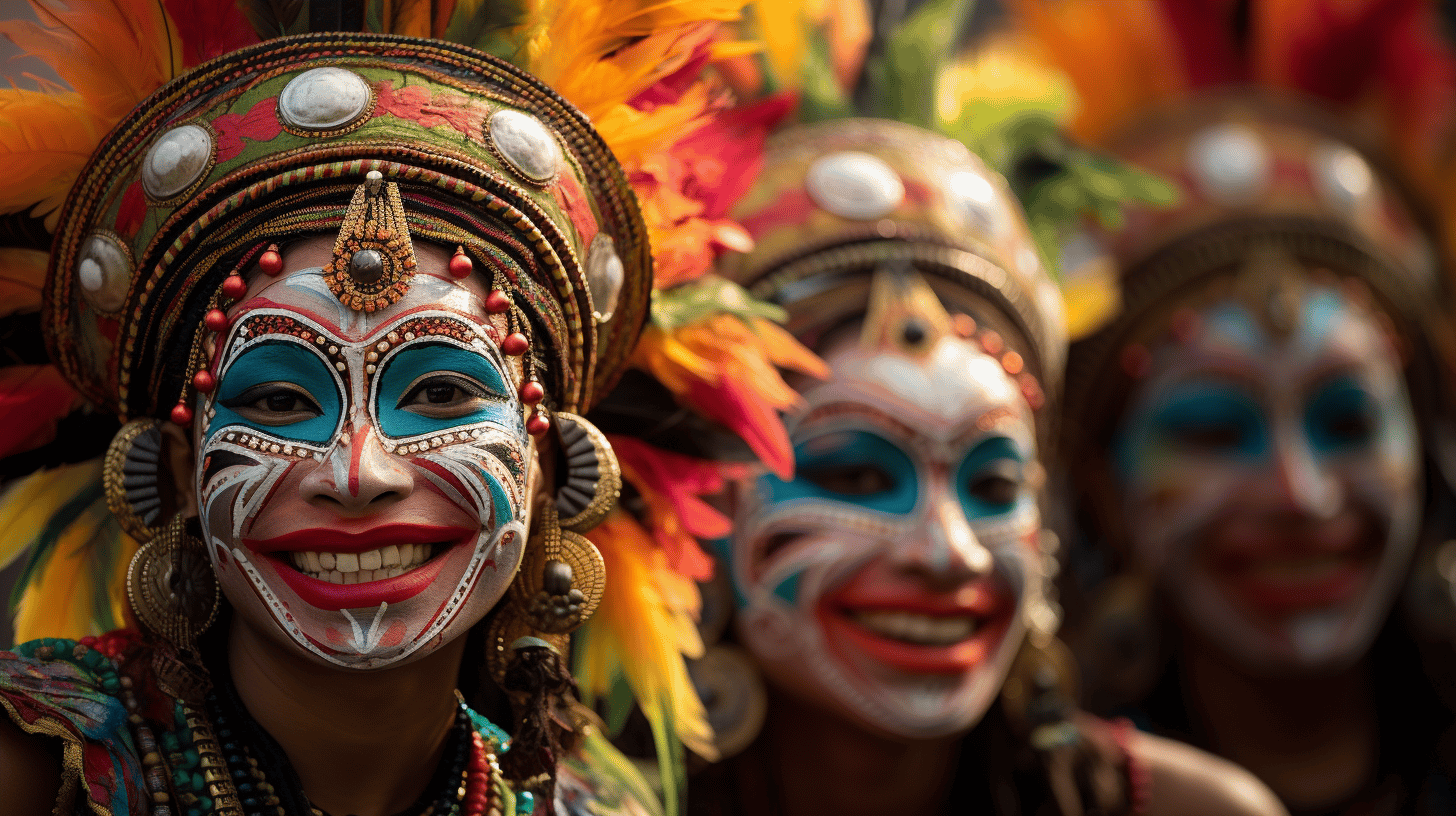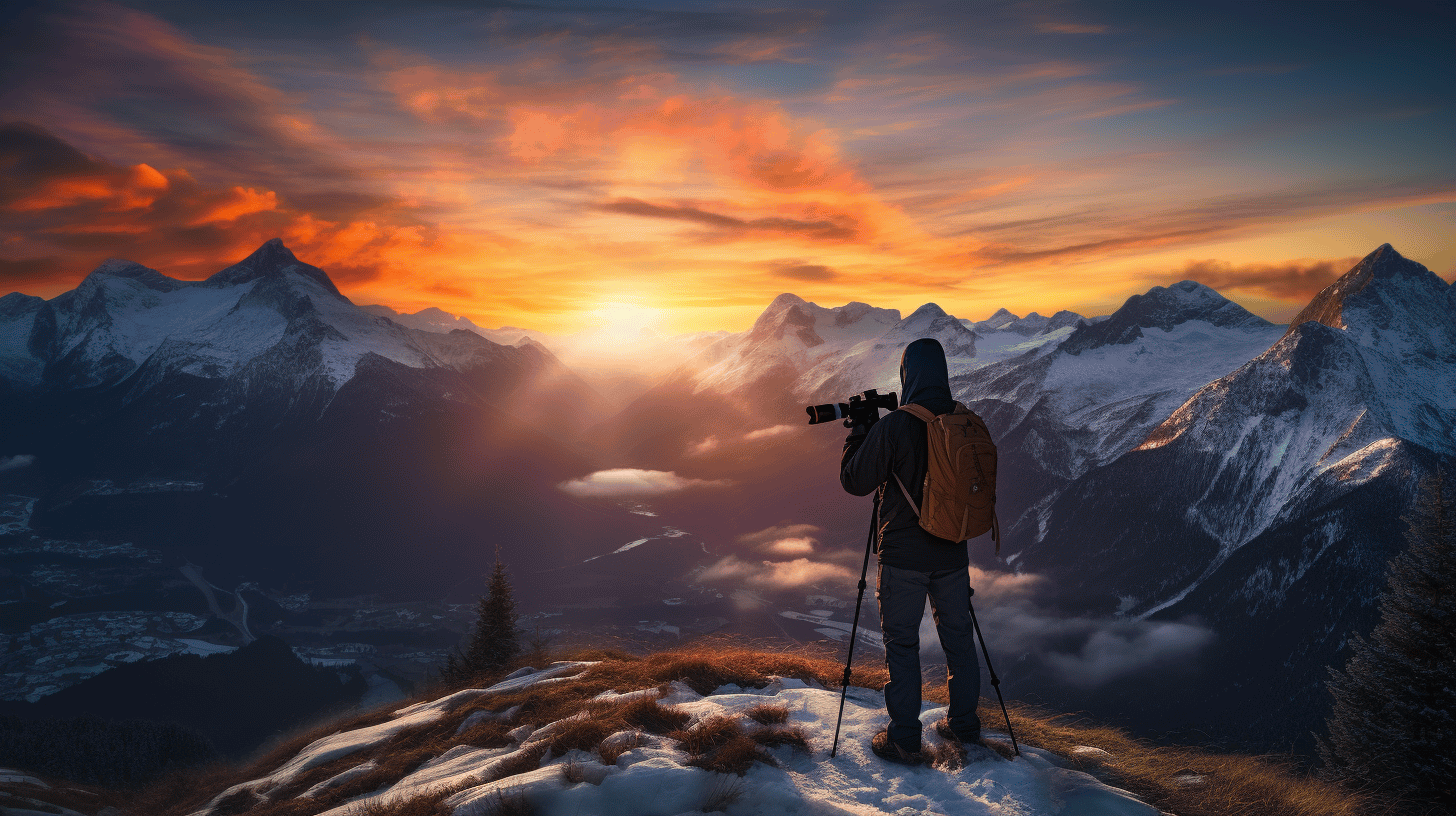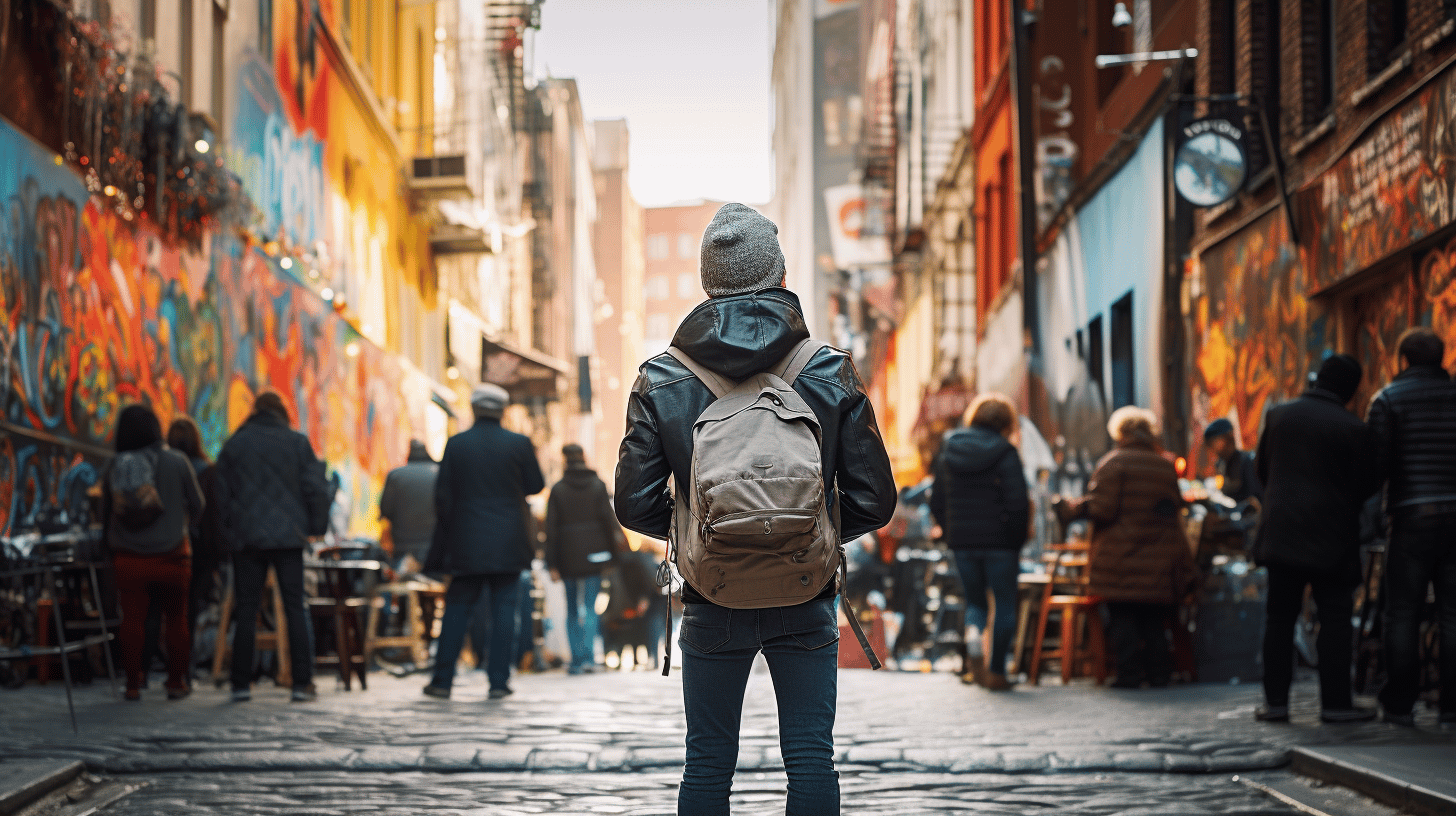Photography has the incredible power to transport us to different places and evoke emotions through visual storytelling. With the rise of social media and the constant need for captivating content, the demand for destination photography tours has grown immensely. These tours offer a unique opportunity to explore new places while honing your photography skills and capturing stunning visual narratives.
Imagine wandering through exotic locations, camera in hand, ready to capture moments that will tell a story. Whether you’re an aspiring photographer looking to improve your skills or a seasoned pro seeking inspiration, destination photography tours provide an immersive experience that combines adventure and creativity.
In this article, we will delve into the connection between photography and storytelling, explore the world of destination photography tours, and provide expert tips on creating compelling visual narratives. Get ready to embark on a journey where your camera becomes a tool for capturing stories and preserving memories. It’s time to tell stories through photos on destination photography tours!
Photography and Storytelling – The Connection
Introduction:
Photography and storytelling share a deep and undeniable connection. Through the lens of a camera, photographers have the unique ability to capture and convey captivating narratives. Whether it’s a stunning landscape, a candid portrait, or a powerful documentary, a single photograph can tell a thousand words. In this article, we will explore the power of visual storytelling in photography and how to create a narrative with your own photos.
The Power of Visual Storytelling
Visual storytelling is a powerful tool that transcends language and cultural barriers. It allows photographers to communicate their ideas, emotions, and experiences in a way that words alone cannot. Here’s why visual storytelling holds such influence:
- Evokes Emotion: A well-crafted photograph can evoke strong emotions, allowing viewers to connect on a deeper level. From joy and awe to sadness and intrigue, capturing the essence of a moment through photography can stir a range of emotions.
- Engages the Audience: Visual storytelling has the ability to draw viewers into the story being told. When a photograph speaks to someone, it creates an immediate connection and beckons them to explore the story further.
- Preserves Memories: Photography allows us to freeze moments in time, forever preserving memories that may otherwise fade over time. Each photograph acts as a time capsule, capturing the essence of a particular moment and allowing us to revisit it whenever we desire.
- Provokes Thought and Reflection: Photography can be thought-provoking, encouraging viewers to contemplate the deeper meaning behind an image. A well-composed photograph has the power to ignite conversations, spark empathy, and challenge our perspectives.
Creating a Narrative with Your Photos
To effectively tell a story through your photographs, consider the following tips:
- Choose a Theme or Concept: Start by choosing a theme or concept that you want to explore. It could be something as broad as nature or as specific as a personal anecdote. Having a central idea in mind will help guide your creative process and give your photos a cohesive narrative.
- Plan Your Shots: Think about the story you want to tell and plan your shots accordingly. Consider the composition, lighting, and perspective that will best convey the message you want to communicate.
- Capture Emotion: Emotion is the heart of any story. Look for moments that evoke strong feelings and capture them authentically. Whether it’s joy, sadness, or passion, emotions can add depth and resonance to your photographs.
- Sequence Your Photos: Arrange your photos in a sequence that flows naturally, much like the chapters of a book. Consider the order in which the images will be viewed and how they complement or contrast each other to create a compelling narrative arc.
In conclusion, photography and storytelling are intrinsically linked. Through visual storytelling, photographers can transcend the confines of language and communicate with people across borders and cultures. By employing techniques like choosing a theme, capturing emotion, and sequencing photos effectively, you can create powerful narratives that captivate and inspire your audience. So grab your camera, and let your photos tell stories that resonate and endure.
Destination Photography Tours – An Overview
Imagine traveling to exotic locations around the world while honing your photography skills and capturing stunning images of breathtaking landscapes, vibrant cultures, and unique moments. That’s the allure of destination photography tours – an immersive experience that combines travel and photography into one unforgettable adventure.
What is a Destination Photography Tour?
At its core, a destination photography tour is a specialized travel experience designed for photography enthusiasts of all levels. Led by professional photographers or experienced guides, these tours take you to some of the most picturesque locations on the planet, offering you the opportunity to capture stunning images and learn new techniques along the way.
Unlike traditional vacations where photography might be an afterthought, destination photography tours put photography front and center. They are tailored to photographers’ needs, allowing you to focus on taking amazing shots while enjoying the beauty and cultural richness of your surroundings.
The Role of Destination Photography Tours in Storytelling
Photography is a powerful medium of storytelling, and destination photography tours offer a unique platform to tell captivating stories through images. Whether you’re capturing the vibrant street life of a bustling Asian city or the serenity of a remote mountain landscape, every photograph has a story to tell.
By immersing yourself in different cultures, exploring off-the-beaten-path locations, and experiencing the local way of life, you gain a deeper understanding of the places you visit. This understanding translates into your photographs, allowing you to capture the essence of a destination and share its story with viewers.
Destination photography tours not only provide you with the opportunity to capture stunning images but also enhance your storytelling abilities. As you learn from experienced photographers, you’ll gain insights into composition, lighting, and other technical aspects of photography. These skills, combined with your unique perspective and the stories you uncover along the way, have the potential to create awe-inspiring visual narratives.
So whether you’re a seasoned professional photographer looking for new inspiration or an amateur photographer eager to explore the world through a lens, destination photography tours offer a transformative experience that combines the joy of travel with the art of photography. It’s a chance to discover the world, tell stories through your lens, and create lasting memories that will live on in your photographs.
Steps to Create a Visual Narrative on Destination Photography Tours
Have you ever looked at a photograph and felt as though you were instantly transported to another place? That’s the magic of visual storytelling. Through the art of photography, we have the power to not only capture stunning landscapes, but also to tell compelling stories that take viewers on a journey. If you’re a photography enthusiast who loves to travel, why not combine your passions and create a visual narrative on your next destination photography tour? Here are the steps to help you get started:
1. Choosing Your Destination
The first step in creating a visual narrative on a destination photography tour is to choose the right location. Consider the following factors when selecting your destination:
- Scenic Beauty: Look for places that offer stunning landscapes, unique cultural elements, or architectural wonders. These elements will serve as the foundation for your visual story.
- Accessibility: Ensure that your chosen destination is easily accessible and provides various opportunities for exploration and photography.
- Seasons: Research the seasons and weather conditions of the destination to determine the best time to visit. Different seasons can dramatically change the mood and aesthetics of your photographs.
2. Planning Your Narrative
Once you’ve settled on a destination, it’s time to plan the narrative of your visual story. Here’s what you need to consider:
- Theme and Concept: Decide on the overarching theme or concept for your visual narrative. Is it about the local culture, natural beauty, or the people you encounter along the way? Having a clear idea of what you want to convey will guide your photography and ensure consistency throughout the story.
- Storyboarding: Create a storyboard or shot list to outline the key moments and scenes you want to capture. This will help you stay organized and focused during your photography tour.
- Research: Familiarize yourself with the destination’s history, culture, and local customs. This knowledge will inform your story and allow you to capture the essence of the place through your lens.
3. Capturing the Story
With your destination chosen and the narrative planned, it’s time to go out and capture the story. Here are some tips to make the most of your photography tour:
- Explore: Don’t be afraid to venture off the beaten path. The best stories often lie in the lesser-known areas of a destination.
- Connect with Locals: Interacting with locals can provide invaluable insights and opportunities for authentic and compelling photographs. Respect their privacy and always ask for permission before taking someone’s portrait.
- Vary Your Shots: Experiment with different perspectives, compositions, and focal lengths to add depth and variety to your visual narrative. Mix wide-angle shots with close-up details to create a well-rounded story.
4. Post-Processing
Once you’ve captured your images, it’s time to bring your visual narrative to life through post-processing. Consider these steps:
- Selecting and Organizing: Review your images and select the ones that best convey your story. Organize them in a logical sequence or order that flows smoothly.
- Editing: Enhance your photographs using post-processing software. Adjust the exposure, colors, and tones to match the mood and atmosphere you intended to capture.
- Creating Consistency: Apply a consistent editing style to your images to maintain visual coherence throughout the narrative. This will ensure a seamless and professional look.
5. Presenting Your Visual Narrative
The final step is to showcase your visual narrative. Consider these options:
- Online Portfolio: Create a dedicated online portfolio or website to display your photographs. This will allow you to share your work with a broader audience and potentially attract clients or collaborations.
- Printed Photobook: Compile your images into a beautifully printed photobook. This tangible format allows viewers to engage with your story on a more intimate level.
- Exhibitions or Galleries: Explore opportunities to exhibit your work at local galleries or photography exhibitions. This can provide exposure and recognition within the photography community.
Creating a visual narrative on a destination photography tour is an exciting and rewarding journey. By choosing the right destination, planning your narrative, capturing the story, post-processing your images, and presenting your final work, you’ll be able to create a compelling visual story that captures the essence and spirit of your chosen destination. So grab your camera, embark on an adventure, and let your photographs weave a captivating tale for all to enjoy.
Expert Tips for Better Visual Narratives
In today’s age of social media, visuals play a crucial role in capturing our attention and telling stories. Whether you’re a professional photographer or simply someone who enjoys taking pictures, mastering the art of visual storytelling can take your photography to the next level. In this article, we will explore some expert tips for creating better visual narratives that captivate your audience and leave a lasting impression.
Understanding Your Subject
When it comes to capturing compelling visual narratives, taking the time to understand your subject is key. Whether you’re photographing a person, a landscape, or an object, it’s important to delve deeper and uncover the story behind it. By understanding the emotions, history, or purpose of your subject, you can craft a visual narrative that goes beyond just a pretty picture.
- Research and Preparation: Before you begin shooting, take the time to research and learn about your subject. This can involve reading books, watching documentaries, or even conducting interviews if possible. The more you know about the subject, the better equipped you’ll be to tell its story through your photographs.
- Empathy: Put yourself in the shoes of your subject and try to understand their perspective. What emotions are they feeling? What are their struggles? By empathizing with your subject, you can capture images that evoke a sense of connection and authenticity.
Playing with Light and Composition
Lighting and composition are essential components of visual storytelling. By using light creatively and carefully considering your composition, you can enhance the narrative of your photographs and make them more visually appealing.
- Natural Light: Take advantage of natural light whenever possible. It can add depth, create interesting shadows, and evoke certain moods in your photographs. Experiment with different times of day and angles to find the perfect lighting for your subject.
- Rule of Thirds: The rule of thirds is a tried-and-true technique in composition. Imagine dividing your frame into nine equal parts with two vertical and two horizontal lines. Place your subject along these lines or at their intersections to create a more balanced and visually pleasing composition.
- Leading Lines: Leading lines can guide the viewer’s eye through your photograph and contribute to the overall narrative. Look for lines in your environment, such as roads, fences, or natural formations, and use them to lead the viewer’s gaze towards your subject.
Creating a Strong Focal Point
A strong focal point is essential for creating a visually impactful narrative. It draws the viewer’s attention and helps tell the story you want to convey.
- Isolate Your Subject: Eliminate distractions and make your subject the clear focus of your photograph. This can be achieved through shallow depth of field, where the subject is sharp while the background is blurred, or by positioning your subject against a simple or contrasting backdrop.
- Use Color and Contrast: Incorporate bold colors or strong contrasts to create visual interest and emphasize your focal point. This can be done through the use of props, clothing, or the environment in which your subject is placed.
Adding Personal Touch to Your Photos
Finally, don’t be afraid to add your own personal touch to your visual narratives. This can involve experimenting with different styles, techniques, or even post-processing methods to create a signature look that sets your photographs apart.
- Experimentation: Try different angles, perspectives, or even camera techniques to add a unique perspective to your visual narratives. Don’t be afraid to step outside your comfort zone and take risks.
- Post-Processing: Use editing tools to enhance your photographs and bring out the story you want to tell. Adjusting colors, contrast, and exposure can help create a more cohesive and impactful narrative.
By implementing these expert tips for better visual narratives, you can elevate your photography and create captivating images that resonate with your audience. Remember, the key is to understand your subject, play with light and composition, create a strong focal point, and add your own personal touch. So grab your camera and start telling stories through your lens!
Ready to learn more about photography? Check out our Photography Basics guide for beginner tips and tricks.
Conclusion
In conclusion, storytelling is a powerful tool in photography, allowing photographers to capture the essence of a place, tell compelling narratives, and evoke emotions through their images. Destination photography tours provide a unique opportunity for photographers to explore new locations, immerse themselves in the culture, and create visual narratives that transport viewers to a different world. By following the steps outlined in this article and applying expert tips, photographers can elevate their storytelling skills and create captivating visual narratives. So, grab your camera, pack your bags, and embark on a photography tour to tell your own stories through photos.
To enhance your photography skills and find inspiration for your projects, be sure to visit Wim Arys photography. Their website, Wimarys.com, offers a wealth of resources, including tutorials, reviews, tips, and tricks, with a particular focus on Sony mirrorless cameras. Whether you’re a beginner or an experienced photographer, Wim Arys photography has something for everyone. Happy shooting!
Frequently Asked Questions
- What are destination photography tours?
Destination photography tours are organized trips or experiences for photography enthusiasts, allowing them to explore different locations and capture stunning visuals through their cameras. These tours offer unique opportunities to photograph landscapes, cultures, and wildlife in various destinations around the world.
- How can destination photography tours help in telling stories through photos?
Destination photography tours provide an immersive experience, allowing photographers to connect with the local environment, culture, and people. By capturing images of the destination’s landscapes, architecture, people, and activities, photographers can create visual narratives that tell stories and evoke emotions for viewers.
- Are destination photography tours only for experienced photographers?
No, destination photography tours are suitable for both experienced photographers and beginners. These tours often provide guidance and instruction from professional photographers, which can help beginners improve their skills and learn new techniques while exploring beautiful destinations.
- What are the benefits of joining a destination photography tour?
Joining a destination photography tour offers several benefits, including access to unique locations, opportunities to learn from professionals, networking with like-minded individuals, and the chance to capture stunning images that may not be possible without local knowledge and guidance.
- How do I choose the right destination photography tour for me?
When choosing a destination photography tour, consider factors such as the tour itinerary, locations visited, duration, group size, accommodation, and the expertise of the tour leaders. Research reviews, testimonials, and the photographer’s portfolio to ensure the tour aligns with your interests and photography goals.




0 Comments